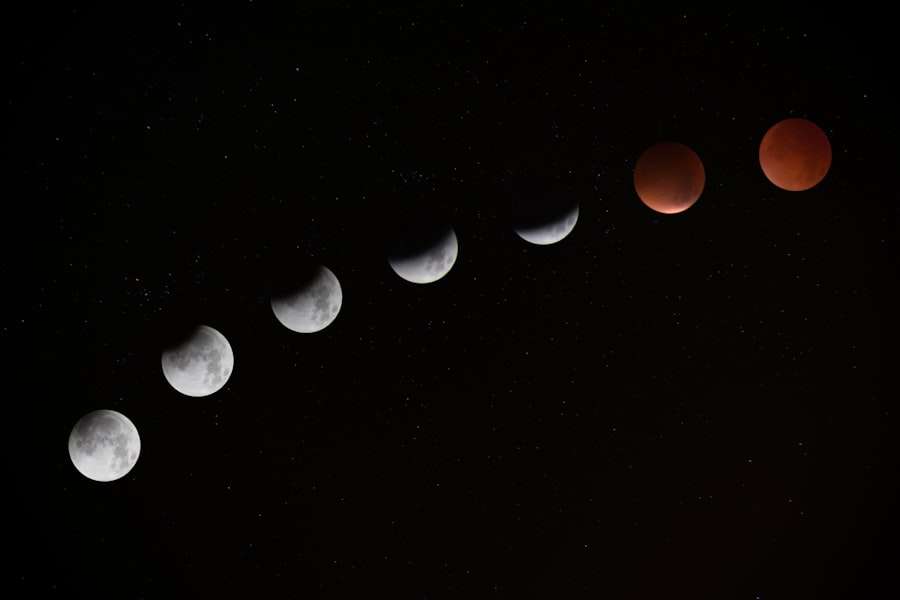How is the moon symbol understood in different cultural traditions?

The Moon has played a significant role in ancient mythology and religion across diverse cultures. Many ancient civilizations associated the Moon with deities or powerful natural forces. In Mesopotamian mythology, the Moon was linked to the god Sin, believed to rule the night and protect travelers.
Ancient Egyptians connected the Moon with Thoth, the god of wisdom, writing, and lunar cycles. Greek mythology associated the Moon with Artemis, goddess of hunting, wilderness, and childbirth. Roman mythology linked the Moon to Diana, also a goddess of hunting and protector of women and children.
Many ancient cultures viewed the Moon as a symbol of femininity and fertility. Its cyclical phases were often compared to the stages of a woman’s life. The Moon’s changing appearance was believed to possess mystical powers in various mythologies.
Its association with nighttime led to connections with darkness and the unknown, contributing to its perceived link with magic and supernatural phenomena. The Moon’s prominence in ancient belief systems reflects its importance as a celestial body representing various deities and embodying different aspects of life and nature.
Key Takeaways
- The moon has been a central figure in ancient mythology and religion, often associated with deities and powerful forces in cultures around the world.
- In Eastern traditions such as Buddhism, Hinduism, and Taoism, the moon is often revered as a symbol of enlightenment, spiritual growth, and the cyclical nature of life.
- In Western traditions like Greek, Roman, and Celtic mythology, the moon is often associated with goddesses, magic, and the cycles of nature, playing a significant role in religious and cultural practices.
- Indigenous cultures such as Native American, Australian Aboriginal, and African traditions have deep connections to the moon, often viewing it as a source of guidance, wisdom, and spiritual power.
- The moon continues to be a powerful symbol in modern art, literature, and popular culture, often representing mystery, femininity, and the subconscious mind in various creative expressions.
The Moon in Eastern Traditions: Buddhism, Hinduism, and Taoism
The Moon in Buddhism
In Buddhism, the Moon is a symbol of enlightenment and is frequently depicted in artwork and literature as a representation of the Buddha’s teachings. The phases of the Moon are also used as a metaphor for the stages of enlightenment, with the full moon symbolizing complete enlightenment and the new moon representing the beginning of the spiritual journey.
The Moon in Hinduism
In Hinduism, the Moon is associated with various deities and has a strong connection to religious rituals and festivals. The god Chandra is the deity of the Moon in Hindu mythology and is often depicted riding a chariot pulled by white horses across the night sky. The Moon is also closely linked to Hindu calendar systems and is used to determine important religious festivals and ceremonies.
The Moon in Taoism
In Taoism, the Moon is seen as a symbol of yin energy, representing receptivity, intuition, and the feminine principle. The Moon’s cyclical nature is also seen as a reflection of the natural order and balance in Taoist philosophy. Overall, in Eastern traditions, the Moon holds a deep spiritual significance and is often associated with enlightenment, religious rituals, and philosophical concepts related to balance and harmony.
The Moon in Western Traditions: Greek, Roman, and Celtic Mythology

In Western traditions, such as Greek, Roman, and Celtic mythology, the Moon has been a prominent figure with various symbolic meanings and associations. In Greek mythology, the Moon was associated with the goddess Artemis, who was revered as the protector of women and children, as well as the goddess of the hunt and wilderness. Artemis was often depicted with a crescent moon on her forehead, symbolizing her connection to the lunar cycle.
The Greeks also believed that the Moon was inhabited by deities and spirits, adding to its mystical significance. In Roman mythology, the Moon was associated with the goddess Diana, who shared many similarities with the Greek goddess Artemis. Diana was also considered a protector of women and children and was associated with wild animals and nature.
The Romans celebrated festivals in honor of Diana, often involving moonlit processions and rituals. In Celtic mythology, the Moon was associated with various deities and had strong connections to rituals and folklore. The Celts believed that the Moon had magical powers and played a significant role in their religious practices and ceremonies.
Overall, in Western traditions, the Moon held a central place in mythology and was often associated with powerful goddesses and mystical symbolism related to femininity, nature, and magic.
The Moon in Indigenous Cultures: Native American, Australian Aboriginal, and African Traditions
In indigenous cultures around the world, such as Native American, Australian Aboriginal, and African traditions, the Moon has been revered as a sacred entity with deep spiritual significance. In Native American cultures, different tribes had their own unique beliefs and stories about the Moon. For example, the Navajo people believed that the Moon was a powerful deity who controlled the night sky and influenced human behavior.
The Cherokee people also had stories about the Moon being a powerful figure who guided hunters and protected women. In Australian Aboriginal traditions, the Moon is seen as a creator deity who played a central role in shaping the natural world. The Aboriginal people have various Dreamtime stories that explain how the Moon created different landscapes and animals through its actions.
The phases of the Moon are also used to determine important cultural ceremonies and rituals in Aboriginal culture. In African traditions, the Moon is often associated with fertility rituals and agricultural practices. Many African cultures believe that the phases of the Moon influence crop growth and fertility, leading to various lunar-based ceremonies and celebrations.
Overall, in indigenous cultures, the Moon holds a significant place in spiritual beliefs and cultural practices, often being associated with creation stories, fertility rituals, and natural phenomena.
The Moon in Modern Symbolism: Art, Literature, and Popular Culture
In modern times, the Moon continues to be a powerful symbol in art, literature, and popular culture. Artists have long been inspired by the beauty and mystery of the Moon, using it as a subject in paintings, sculptures, and other forms of visual art. The Moon’s ethereal glow and ever-changing appearance have captivated artists for centuries, leading to countless depictions of lunar landscapes and celestial scenes.
In literature, the Moon has been used as a symbol of romance, mystery, and transformation in countless works of fiction and poetry. Writers often use lunar imagery to evoke feelings of nostalgia or to create an otherworldly atmosphere in their stories. The Moon’s association with night-time also adds an element of darkness and intrigue to many literary works.
In popular culture, the Moon has been featured in numerous films, television shows, and music videos as a symbol of adventure and exploration. Science fiction stories often use the Moon as a setting for futuristic narratives or as a launching point for space travel. Additionally, many popular songs have been written about the Moon, using its symbolism to convey themes of love, longing, or introspection.
Overall, in modern symbolism, the Moon continues to be a source of inspiration for artists, writers, and creators across various forms of media.
The Moon in Astrology and Divination

The Moon’s Impact on Emotions and Instincts
In astrology, the Moon is considered a crucial celestial body that shapes human behavior and destiny. The position of the Moon at the time of a person’s birth is believed to influence their emotions, instincts, and subconscious tendencies. The phases of the Moon are also used to determine auspicious times for certain activities or rituals in astrological traditions.
The Moon’s Association with Intuition and Hidden Knowledge
In divination practices such as tarot card readings or scrying, the Moon is often associated with intuition, dreams, and hidden knowledge. Many divination tools feature lunar imagery or symbols to evoke mystical insights or spiritual guidance. The phases of the Moon are also used in divination practices to gain insight into future events or to connect with deeper aspects of one’s psyche.
The Moon as a Tool for Personal Growth and Insight
Overall, in astrology and divination practices, the Moon is seen as a powerful influence on human consciousness and is often used as a tool for gaining insight into personal growth or future events.
The Moon in Contemporary Spiritual Practices: Wicca, Paganism, and New Age Movements
In contemporary spiritual practices such as Wicca, Paganism, and New Age movements, the Moon holds a central place as a symbol of divine feminine energy and spiritual power. Many Wiccan traditions revere the Moon as a goddess figure known as “the Lady” or “the Queen of Heaven,” representing cycles of birth, life, death, and rebirth. Wiccans often perform rituals or ceremonies during specific phases of the Moon to harness its energy for magical workings or spiritual growth.
In Paganism, various traditions incorporate lunar worship into their religious practices, seeing the Moon as a symbol of fertility, intuition, and psychic abilities. Many Pagan rituals are performed under moonlight or during specific lunar phases to honor deities associated with the Moon or to connect with natural cycles. In New Age movements, the Moon is often seen as a source of mystical energy that can be harnessed for personal transformation or spiritual healing.
New Age practitioners may use lunar calendars or rituals to align themselves with cosmic energies or to manifest their intentions through moon magic. Overall, in contemporary spiritual practices, the Moon continues to be revered as a symbol of divine feminine energy and is often used as a tool for connecting with spiritual forces or for personal empowerment. In conclusion, throughout history and across various cultures around the world, the Moon has held a significant place in mythology, religion, symbolism, astrology, divination practices, and contemporary spiritual movements.
Its ever-changing appearance has inspired countless works of art and literature while its mystical symbolism continues to captivate people’s imaginations. Whether as a deity figure in ancient mythologies or as a source of spiritual power in modern practices, the Moon remains an enduring symbol that connects humanity to nature’s cycles and cosmic forces.
FAQs
What is the significance of the moon symbol in different cultural traditions?
The moon symbol holds various meanings in different cultural traditions, including fertility, femininity, transformation, and the passage of time.
How is the moon symbol interpreted in Western cultures?
In Western cultures, the moon symbol is often associated with mystery, intuition, and the subconscious mind. It is also linked to the cycles of life, as represented by the phases of the moon.
What does the moon symbol represent in Eastern cultures?
In Eastern cultures, the moon symbol is often associated with yin energy, tranquility, and enlightenment. It is also linked to the concept of harmony and balance in nature.
How is the moon symbol understood in indigenous cultures?
In indigenous cultures, the moon symbol is often seen as a powerful force that influences the natural world and human behavior. It is also associated with storytelling, rituals, and traditional healing practices.
Are there any common themes in the interpretation of the moon symbol across different cultural traditions?
Yes, some common themes in the interpretation of the moon symbol across different cultural traditions include its connection to the feminine, its influence on the natural world, and its role in guiding human behavior and spiritual practices.





